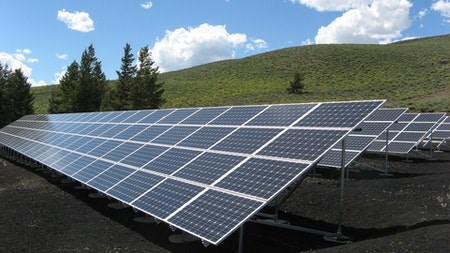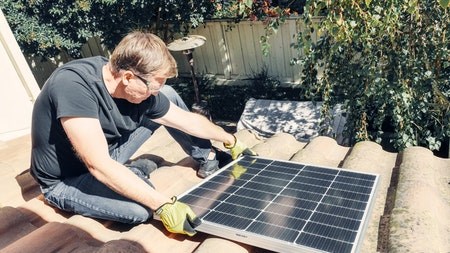There is currently much debate around solar geysers: are they worth the money? How long do they stay warm? Does water get sufficiently warm? What type of heating system should I use? This is a quick, layman’s guide to solar geysers. The option that best suits your home will be determined by factors such as geography, the number of people in your home or office, and budget.
You have to determine whether you need to install a direct or indirect system. Generally, direct systems are best for frost-free areas below the escarpment as the water is heated up directly. Indirect systems are better suited for areas with frost as the water is heated up through an exchange mechanism.
From here, decide on a tank size. As a guideline, allocate 50 litres of warm water per person in a dwelling and add an extra 50 litres for general domestic use. This should give you an estimate of the tank size you need to install.
The climate of your area should also be taken into account. A system with smaller panels is less effective in cloudy areas as it might not meet your hot water needs and you’ll fall back on the municipal grid. At the other end of the spectrum, if you live in a warm climate installing big panels may produce dangerously warm water.
There are two options for water storage, namely pumped storage and thermosyphon. As the term suggests, in a pumped storage system, the tank may be placed in a ceiling or cupboard, out of view, with the pump forcibly moving water. If you don’t mind having a visible tank on your roof (and if your roof can support the weight) then choose a thermosyphon system. Here, water moves by natural convection. A major benefit of this type of fitting is that burst geysers are less likely to cause damage as water will run off the roof or into gutters.
And if your head is not spinning from all the choices mentioned above, there are three basic tank configurations. A standard installation uses a new solar tank and regular configuration. This type of fitting will produce the biggest saving as it is less likely to require municipal power. It would, however, require replacing your existing geyser altogether.
Pre-feed installation systems use a solar tank and panels that then feed into your existing geysers. This option is generally preferred by anyone wanting extra hot water capacity, although it may only be suitable for newer geysers. Users will save money but less than those who install full systems, as a pre-existing geyser will still use power from the grid to heat the element.
A retro-fit system connects panels to an existing geyser, essentially converting it to a standard system. This option will produce savings on installation costs but will only work if the existing geyser is able to undergo this conversion.
You should see an immediate improvement in your municipal bill although it is important to remember that this saving will be offset as tariffs increase. At some point you will need to consider other means of energy saving such as using gas for heating and cooking, using energy saving light bulbs or fitting solar panels to power household appliances.
It’s probably best to contact a few suppliers for quotes and advice before making a final decision as systems cost anywhere between R10 000 and R30 000. Recently, a number of suppliers have implemented rental schemes. The major benefit of renting a geyser is that, should anything go wrong, you will not be responsible for repairs or replacements.
Information about solar geysers can be found on Atlantic Solar’s website. Here’s more information about geyser rentals.
Eskom currently offers rebates to homeowners wishing to fit a solar geyser. The rebate works in one of two ways. Either you pay the full installation price and claim the money back from Eskom. Naturally, there are some terms and conditions. You have to use an accredited system and supplier. The supplier, homeowner and qualified electrician would need to submit a claim form which will be looked at by auditors before payment is made.
The other option involves the supplier claiming the rebate from Eskom and charging a discounted price upfront. Suppliers who do this would need a pre-existing arrangement with Eskom. A wealth of information as well as a list of accredited suppliers can be found on the Eskom website.



